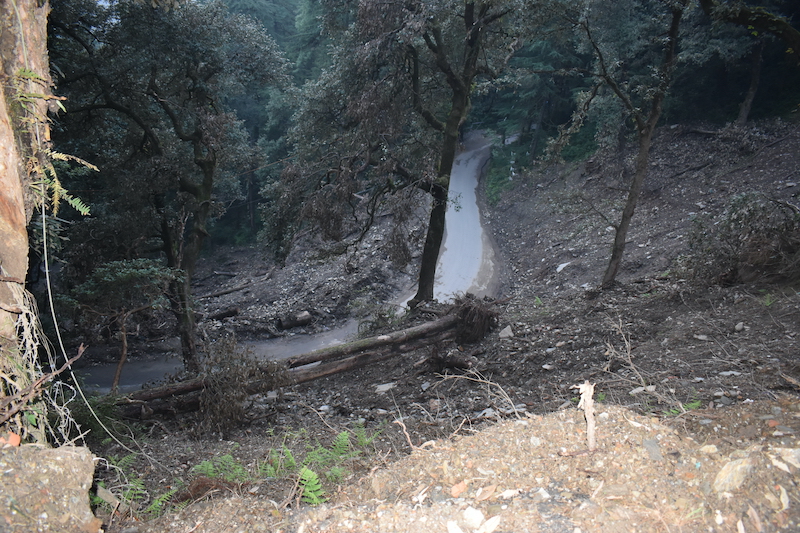The increasing frequency of landslides in recent months, particularly in August and September in districts such as Shimla, Mandi, Kullu, Chamba, Sirmaur and Kangra, underscores the urgency of understanding this natural hazard condition in Himachal Pradesh in a scientific way.

Situated in the complex architecture of the north-western Himalayas, the region has a history of landslides as old as its oral and written traditions. Despite limited historical data, little information from local folklore and historical gazetteers provides a vivid picture of recurring devastation. Historically, every district appears prone to various types of landslides—some driven by rainfall, others by earthquakes, and sometimes by anthropogenic activity—that have led to the loss of social and environmental capital. This narrative is not only consistent but also analytically relevant. Through examination of the National Remote Sensing Centre’s Landslide Inventory of India 2023, which includes data on landslides from 1998 to 2022, reveals that the behaviour and types of landslides are predominantly concentrated in the Lesser Himalayan and adjacent regions of the state.
While the historical and current data paint a concerning picture of landslide susceptibility across Himachal Pradesh, understanding the various factors of landslide origins is key to mitigating their impact and safeguarding both human and environmental well-being. Typically the characteristics of landslides are site-specific, and have local variability but are often related to larger regional processes. Understanding landslides in Himachal Pradesh requires a multifaceted approach that delves into site-specific and regional factors. Four key processes significantly influence the pattern of landslides in the Himalayan region. First, the tectonic evolution of the Himalayas—the world’s youngest mountain chain formed by the collision of the Eurasian and Indian plates 65 million years ago—is a pivotal factor.
The Wedge Theory, for instance, offers insights into the complex behaviour of the Himalayas, explaining why some regions are particularly susceptible to landslides. Second, the Himalayan monsoons, which originated during the Miocene era around 20 million years ago, have evolved in tandem with the growth of the Himalayas and have undergone various phases of intensification. This has led to rapid exhumation and focused erosion. The region’s heavy rainfall often concentrated over short periods, can saturate the groundmass and act as a trigger for landslides. Third, the landscapes of regions such as Shimla, Mandi, Kinnaur, and Kullu have been shaped by the geomorphological influences of the last Ice Age, specifically the Pleistocene glaciation that occurred between 10,000 and 20,000 years ago. This has resulted in the development of stable and gentle slopes in the northern to northeastern regions. In contrast, the southern to southwestern slopes, characterized by their sharp inclines, have become more prone to destabilization (Source: Down to Earth, February Edition, 2023). Fourth, the climate change perspective is increasingly pertinent. The Himalayan region of India has a fragile ecosystem that is particularly vulnerable to climate change. According to global projections from the Coupled Model Intercomparison Project Phase 5 (CMIP5), average temperatures worldwide are expected to rise. Additionally, the projected increase in summer monsoon rainfall, combined with greater interannual variability, is anticipated to result in an increased number of extremely wet years and potentially more high rainfall events.
While these projections have implications on a global scale, their relevance is especially acute for Himachal Pradesh. The state’s diverse climatic and geographical features make it particularly susceptible to increased rainfall, especially in transition regions where rain and snow intersect. This projected increase in rainfall could exacerbate existing vulnerabilities, leading to greater ground saturation and, consequently, a higher likelihood of landslides.

As alarming as these projections may seem, they are not merely hypothetical scenarios confined to global estimates. In fact, they are corroborated by more localized studies and observations. The ‘Risk and Vulnerability of Indian Agriculture to Climate Change 2019’ report provides a district-wise analysis, revealing that regions such as Kinnaur, Kullu, Mandi, Shimla, and Chamba face a high to very high risk under current conditions. These observations are further substantiated by the scientific findings in the Sixth Assessment Report of the IPCC (Intergovernmental Panel on Climate Change). Therefore, it is evident that shifting climatic conditions are exerting a significant impact on the Himalayan regions.

In synthesizing these key insights, we recognize that Himachal Pradesh’s challenges require an adaptive, integrated approach. As we reflect on the IPCC’s comprehensive recommendations, it becomes evident that tackling the complex issue of climate change in regions like Himachal Pradesh demands a multi-pronged strategy. Technological innovation and public participation are essential pillars; however, these efforts must also be underpinned by rigorous scientific research and decentralized governance, extending all the way to the Panchayat level. This approach effectively transforms each local body into a warrior against climate change. Achieving this is only possible in an equitable society, which provides fertile ground for implementing these strategies. Social equity fosters an environment where collective action becomes more achievable. Therefore, it is imperative that our approach to combating these unprecedented challenges is as comprehensive as the challenges themselves, integrating technological, social, and governance dimensions to build a climate-resilient future for all.

Shubham Chaudhary is a geologist. He teaches geology to undergraduates at a government college in Himachal Pradesh. He lives in Shimla.



Very detailed and thoughtful article. The writer has taken atmost care in regards to using technical terminology and made it an easy read for wider circulation.I think we need a large number of such science communicators, so that science could be more of an open subject than a closed door jargon.
Have never seen such detailed science coverage of disasters. In general, most of the media coverage is about either post relief efforts or political blame games. We need to talk and address the roots governing such events. This article aptly serves the purpose. It would be more fruitful if media outlet can post takes of politicians on such articles that are purely based on science of the issue, so that public can make more informed choices about their leaders.
Very nice Explaination Sir…